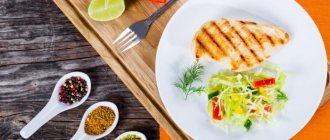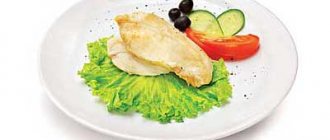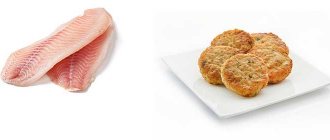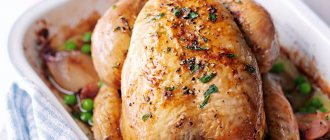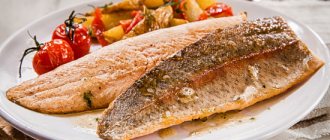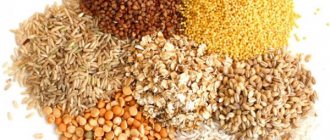Dietary properties:
What calorie content does chicken stew have in liver, what beneficial properties does it have? All this is of great interest to those who lead a healthy lifestyle and take care of their health and figure. So we will try to answer these questions in the next article.
So here it is:
Let's start with the fact that chicken liver is actually a dietary product. Its properties are very similar to chicken breast: it is also low in calories and very nutritious. However, when comparing these products, the liver is ahead of the breast in terms of phosphorus and magnesium content, as well as in the amount of some vitamins. Chicken liver is a rich source of vitamin A, necessary for normal vision and skin.
The iron content per 100 grams of this food product covers the daily need of our body for this useful element, which, as is known, is necessary for the synthesis of hemoglobin.
Chicken liver is an important and valuable ingredient in a considerable number of recipes in the national cuisines of almost all peoples of the Earth. Its nutritional value comes from the fats that are located under its outer layers.
Harm and contraindications
We have looked at the positive characteristics of chicken liver, but it is equally important to have a good understanding of the harm it can cause to human health.
The liver of any living creature is an organ that acts as a filter, so it is in it that harmful substances accumulate. The more chemical additives a bird receives, the fewer nutrients remain in the liver. To minimize the risk, it is better to buy liver either from farmers you trust, or in stores where they carefully monitor the quality of the products supplied.
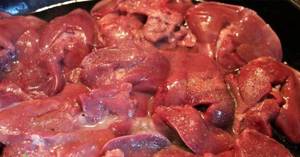
Liver cannot be stored for a long time, so I recommend that you buy this delicacy immediately before cooking and do not keep it in the refrigerator.
It is also worth mentioning once again the high cholesterol content in the product, due to which its daily consumption is not recommended.
How many calories are in stewed chicken liver?
Here's how much:
Recipe:
Products:
Chicken liver - 500 g - (680 kcal)
Onions – 2-3 pcs. — (160 kcal)
Vegetable oil – 2 tbsp. — (306 kcal)
Salt, pepper - to taste.
Wash the liver, dry it, cut it into pieces. Wash the onion and cut it into half rings. Pour vegetable oil into a hot frying pan, add onion, fry until golden brown. Add the liver to the onion and fry for 7-8 minutes. Add salt, pepper, reduce heat and simmer covered for 5 minutes.
Based on this recipe:
Calorie content of chicken liver stewed with onions, per 100 grams, is:
Product calorie analysis
Ratio of proteins, fats and carbohydrates:
- Vitamin A is responsible for normal development, reproductive function, skin and eye health, and maintaining immunity.
- Vitamin B1 is part of the most important enzymes of carbohydrate and energy metabolism, providing the body with energy and plastic substances, as well as the metabolism of branched amino acids. A lack of this vitamin leads to serious disorders of the nervous, digestive and cardiovascular systems.
- Vitamin B2 is involved in redox reactions, helps to increase the color sensitivity of the visual analyzer and dark adaptation. Insufficient intake of vitamin B2 is accompanied by impaired condition of the skin, mucous membranes, and impaired light and twilight vision.
- Choline is part of lecithin, plays a role in the synthesis and metabolism of phospholipids in the liver, is a source of free methyl groups, and acts as a lipotropic factor.
- Vitamin B6 is involved in maintaining the immune response, processes of inhibition and excitation in the central nervous system, in the transformation of amino acids, the metabolism of tryptophan, lipids and nucleic acids, promotes the normal formation of red blood cells, and maintaining normal levels of homocysteine in the blood. Insufficient intake of vitamin B6 is accompanied by decreased appetite, impaired skin condition, and the development of homocysteinemia and anemia.
- Vitamin B9 as a coenzyme is involved in the metabolism of nucleic acids and amino acids. Folate deficiency leads to disruption of the synthesis of nucleic acids and proteins, resulting in inhibition of cell growth and division, especially in rapidly proliferating tissues: bone marrow, intestinal epithelium, etc. Insufficient folate intake during pregnancy is one of the causes of prematurity, malnutrition, and congenital deformities and child development disorders. A strong relationship has been shown between folate and homocysteine levels and the risk of cardiovascular disease.
- Vitamin B12 plays an important role in the metabolism and transformation of amino acids. Folate and vitamin B12 are interconnected vitamins that are involved in hematopoiesis. A lack of vitamin B12 leads to the development of partial or secondary folate deficiency, as well as anemia, leukopenia, and thrombocytopenia.
- Vitamin C is involved in redox reactions, the functioning of the immune system, and promotes the absorption of iron. Deficiency leads to loose and bleeding gums, nosebleeds due to increased permeability and fragility of blood capillaries.
- Vitamin PP is involved in redox reactions of energy metabolism. Insufficient vitamin intake is accompanied by disruption of the normal condition of the skin, gastrointestinal tract and nervous system.
- Potassium is the main intracellular ion that takes part in the regulation of water, acid and electrolyte balance, and is involved in the processes of conducting nerve impulses and regulating blood pressure.
- Phosphorus takes part in many physiological processes, including energy metabolism, regulates acid-base balance, is part of phospholipids, nucleotides and nucleic acids, and is necessary for the mineralization of bones and teeth. Deficiency leads to anorexia, anemia, and rickets.
- Iron is part of proteins with various functions, including enzymes. Participates in the transport of electrons and oxygen, ensures the occurrence of redox reactions and activation of peroxidation. Insufficient consumption leads to hypochromic anemia, myoglobin deficiency atony of skeletal muscles, increased fatigue, myocardiopathy, and atrophic gastritis.
- Cobalt is part of vitamin B12. Activates enzymes of fatty acid metabolism and folic acid metabolism.
- Manganese is involved in the formation of bone and connective tissue, and is part of enzymes involved in the metabolism of amino acids, carbohydrates, and catecholamines; necessary for the synthesis of cholesterol and nucleotides. Insufficient consumption is accompanied by slower growth, disturbances in the reproductive system, increased fragility of bone tissue, and disturbances in carbohydrate and lipid metabolism.
- Copper is part of enzymes that have redox activity and are involved in the metabolism of iron, stimulates the absorption of proteins and carbohydrates. Participates in the processes of providing oxygen to the tissues of the human body. Deficiency is manifested by disturbances in the formation of the cardiovascular system and skeleton, and the development of connective tissue dysplasia.
- Molybdenum is a cofactor for many enzymes that ensure the metabolism of sulfur-containing amino acids, purines and pyrimidines.
- Selenium is an essential element of the antioxidant defense system of the human body, has an immunomodulatory effect, and is involved in the regulation of the action of thyroid hormones. Deficiency leads to Kashin-Beck disease (osteoarthritis with multiple deformities of the joints, spine and limbs), Keshan disease (endemic myocardiopathy), and hereditary thrombasthenia.
- Chromium is involved in the regulation of blood glucose levels, enhancing the effect of insulin. Deficiency leads to decreased glucose tolerance.
- Zinc is part of more than 300 enzymes and is involved in the processes of synthesis and breakdown of carbohydrates, proteins, fats, nucleic acids and in the regulation of the expression of a number of genes. Insufficient consumption leads to anemia, secondary immunodeficiency, liver cirrhosis, sexual dysfunction, and the presence of fetal malformations. Research in recent years has revealed the ability of high doses of zinc to disrupt the absorption of copper and thereby contribute to the development of anemia.
more hide
You can see a complete directory of the healthiest foods in the “My Healthy Diet” app.
The FitAudit website is your assistant in matters of nutrition for every day.
True information about food will help you lose weight, gain muscle mass, improve your health, and become an active and cheerful person.
You will find a lot of new products for yourself, learn their true benefits, and remove from your diet those products that you had no idea were harmful before.
All data is based on reliable scientific research and can be used by both amateurs and professional nutritionists and athletes.
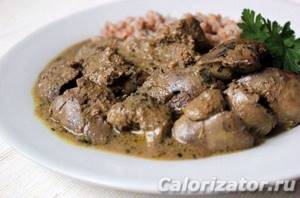
How to prepare the dish “Stewed chicken liver”
- Cut the liver into small pieces.
- Place in a frying pan, add sour cream, water, stir and simmer until done.
- Chop the parsley and add to the liver.
- Chicken liver - 290 gr.
- Sour cream - 50 gr.
- Water - 60 gr.
- Parsley - 20 gr.
Nutritional value of the dish “Stewed chicken liver” (per 100 grams):
Onion calories. Bulb onions
Onion is a herbaceous perennial of the Onion family, one of the most common vegetable crops. Mediterranean countries, China and Iran used onions for food long before our era; in Russia, the spread of onions began in the 12th century from the Roman Empire.
Onions, depending on the variety, have a round, slightly elongated or flattened scaly bulb, white, purple or golden in color, the outer shell is dry and brittle, inside there are fleshy, juicy scales of white or slightly pinkish color. Onions have a pungent taste and a rather pungent odor.
Calorie content of onions
The calorie content of onions is 47 kcal per 100 grams of product.
Composition and beneficial properties of onions
Onions contain a large amount of vitamin C, an antioxidant necessary for the prevention of colds, strengthening the immune system and fighting viruses. A special substance was discovered in onions - the flavonoid quercetin, which promotes the breakdown of fats and slows down the growth of cancer cells. The bulbs contain phytoncides, known for their bactericidal effect, sugars, organic acids and minerals. Onions owe their pungent taste and specific smell to essential oil.
The beneficial properties of onions are fully manifested when raw onions are eaten; with any heat treatment, the amount of beneficial substances decreases. Onions have a diuretic effect, promote the secretion of digestive juices, and are one of the natural remedies against helminths.
Onions are actively used in pharmacology for the manufacture of medicines and dietary supplements, in cosmetology, and in folk medicine. An onion mask stimulates hair growth and promotes healthy hair.
Harm of onions
Fresh onions are not recommended for use for hypertension, urolithiasis, gastritis and ulcers, chronic heartburn and liver diseases. Allergic reactions to onions are rare. As a rule, onions that have undergone any heat treatment do not irritate the mucous membranes and are practically harmless.
Onions for weight loss
Due to its low calorie content and the presence of useful substances, onions are an ingredient in several diets, for example, the Onion Soup diet. If there are no medical contraindications to eating onions, then you can arrange a fasting day or the “Onion Soup” mono-diet.
Varieties of onions
Onions are grown by many summer residents and owners of personal plots; the plant can be planted with seeds that form after flowering or with sets. Among the variety of onion varieties, everyone can choose several for specific purposes - for storage, making salads, spicy or sweet. The most common varieties are Aleko, Arzamassky, Zolotisty, Danilovsky, Timiryazevsky, Belozersky, Sturon, Kaba, Rostovsky, Spanish, Stuttgarten Risen.
Selection and storage of onions
When choosing onions, you need to pay attention to the dryness and integrity of the upper husk, the absence of dark spots, dents and roots. Bulbs should be stored in a cool, dark place with good ventilation, checking periodically for softness. Good dry onions can retain their beneficial properties from autumn to spring.
Onions in cooking
Onions are probably one of the most common vegetables and are used all over the world. Onions are used raw; they can be fried, boiled, stewed, baked, pickled, used as a filling for pies and pancakes, or added directly to dough. Onions are added to salads, various appetizers, soups, stews, main courses of vegetables, meat, poultry and fish, side dishes, they are combined with mushrooms and offal, and are a savory addition or an integral part of many dishes (calorizator). Perhaps only fruit drinks and compotes are not prepared from onions, but jelly and marmalade are of excellent taste.
Liver is a popular offal from which many main dishes can be prepared. People who care about their weight should know about the calorie content of liver of different origins - chicken, beef, pork. This will help you more accurately distribute the energy value of your diet throughout the day.
Egg calories. Eggs: calorie content
Eggs contain a lot of useful substances, which are absorbed by 95-97%. One egg contains enough proteins, vitamins, micro and macroelements to meet the body's needs.
Eggs contain 9 of the 11 fatty amino acids that are important for human health. Their lack causes weakened immunity, fatigue, hair loss and deterioration of skin condition.
Why can eggs be harmful?
The yolk of an egg contains cholesterol, the excess of which negatively affects the human vascular system. When eggs are consumed in moderation, cholesterol is harmless. It is recommended to consume no more than 5-7 eggs per week.
Egg white contains an allergen (ovomucoid). Eating eggs may cause an allergic reaction. The adult body copes with this in most cases, but children often exhibit allergy symptoms.
Calorie content of eggs
Eggs contain few calories. Their number depends on many factors:
- on size;
- depending on the type of bird;
- on the age of the bird;
- from poultry feed.
Most of all, the calorie content of eggs is influenced by the method of their preparation. However, on average, one egg contains about 130-185 kcal/100 g. When eating, you should also take into account that the yolk has more calories than the white. It accounts for about 75% of the calorie content of an egg. That is, if the weight of an average egg is about 50 grams, then its white contains about 18 kcal, and its yolk contains about 60 kcal.
Eggs are eaten as a main dish or as an ingredient. During heat treatment, the beneficial substances contained in the egg are practically not lost. Eating raw eggs is not recommended. They may contain bacteria that cause an intestinal infection - salmonellosis.
